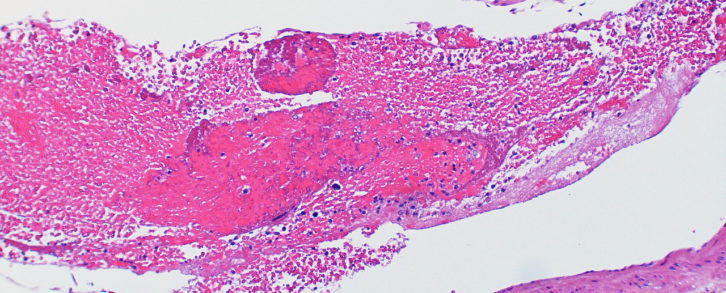Elderly Stroke: Causes, Symptoms, and Prevention
By Meredith Kimple
Stroke affects more than 700,000 people in the United States each year. It is currently the fifth leading cause of death, killing more than 130,000 annually, and is the leading cause of adult disability. While strokes can happen at any age, they are most prevalent among the elderly. Despite our society’s awareness of the prevalence of stroke, we may not know how best to help our senior loved ones prevent or recover from such life-altering attacks.
What causes a stroke?
A stroke occurs when blood is unable to reach an area of the brain. Deprived of the necessary oxygen, the brain cells in the affected region begin to die, resulting in various degrees of brain damage or, in a worst-case scenario, death. Though not all stroke survivors are crippled by their accident, an estimated 2/3 of survivors are left with some sort of disability.
There are two types of stroke. The first, Ischemic Stroke, is the more prominent of the two (approximately 80% of cases) and has a greater impact on the elderly. Ischemic Stroke occurs when a clot blocks the blood flow to a certain area of the brain; these clots may originate in the brain or, in some cases, they travel to the brain from a different part of the body. The second type, Hemorrhagic Stroke, occurs when a blood vessel bursts or leaks; this excess of blood places immense pressure on the brain, depriving certain areas of oxygen. Though not nearly as common as Ischemic Stroke, Hemorrhagic Stroke is more likely to prove fatal.
Stroke’s prevalence among older individuals depends upon several factors. Perhaps the most likely explanation is that the longer we live, the more chronic health conditions we acquire. For instance, diabetes, high blood pressure, heart disease, cardiovascular problems, and high cholesterol can all increase a person’s risk of having a stroke. However, certain aspects of an older person’s lifestyle can also contribute to their risk of stroke; a poor diet often exacerbates the aforementioned health conditions and, coupled with a lack of physical activity, can lead to weight gain. Many older people find exercise extremely difficult, making them more likely to live a sedentary life.
Given these conditions, we might mistakenly assume that there is little that can be done to prevent stroke in our older loved ones. While there is no foolproof method by which we can entirely protect them from stroke, there are steps we can take to help them lower their risk.
- Encourage Healthy Eating
Your senior loved one may find grocery shopping and food preparation physically difficult, time-consuming, and expensive. Instead of eating a balanced diet full of fresh fruits and vegetables, they may choose quick, instant options like microwave meals or fast food. Help them come up with a plan; you could help them find simple, healthy recipes, assist them in making their grocery list and doing the shopping, or brainstorm new ways to make food prep easier.
- Get Them Moving
In previous blog posts, we’ve addressed the challenges seniors face when it comes to regular, effective exercise. Physical limitations can force older people into a sedentary life, which in turn increases their risk of developing severe health problems. Talk to your senior loved one about seeing a physical therapist, who will help them devise an exercise regimen that is tailored to their needs. You can also suggest more gentle forms of exercise, like Tai Chi and swimming.
- Reduce Smoking and Alcohol Consumption
Both smoking and excessive alcohol consumption increase a person’s risk of stroke. If your senior loved one frequently smokes or drinks, voice your concerns to their regular physician. A doctor may be able to have that difficult conversation with them, relieving you of the burden; the advice of a professional may seem less judgmental and prove more effective in the long-term.
- Manage Other Health Conditions
Make sure that your senior loved one is taking their medication. Diabetes, high blood pressure, high cholesterol, and heart disease all require careful monitoring; life can be busy and overwhelming, and our senior loved ones may forget to test their blood glucose levels or check their blood pressure. They may view such necessary maintenance as a hassle, or find the process too involved. If you notice or strongly suspect that they are neglecting their health, consciously or unconsciously, do not hesitate to make your concerns known.
These are just a few of the steps we can take to lower our senior loved ones’ risk of having a stroke. However, if your senior loved one does have a stroke, knowing the signs and symptoms is of the utmost importance. The following commonly precede a stroke event:
- Numbness in the face, arm, or leg, usually on one side of the body.
- Sudden changes in eyesight, including blurred and blackened vision.
- Difficulty speaking, particularly slurring words.
- Confusion and difficulty understanding.
- Sudden, severe headaches, vomiting and / or dizziness.
- Difficulty walking, impaired movement and loss of balance.
It goes without saying that when a stroke occurs, time is of the essence. The longer the affected area of the brain is deprived of oxygen, the more damage is done. Recovery is possible, but it can be extremely difficult, particularly on the elderly. If you notice any of the symptoms listed above, do not take any chances; caution is always prudent, and in the case of a stroke, it can mean all the difference in the severity of their injury. It can mean the difference between life and death.
Stroke is sometimes, though not always, fatal. Survival is often accompanied by significant physical and cognitive changes; depending on which area of the brain was affected, a person may now struggle with speech impairment, limited motor function, or the loss of certain senses. Recovery is a slow, strenuous process of adjustments and, of course, frustrations. As their loved ones, we can and should provide them with all the love and support they need as they adapt to these enormous changes.
Though we have no way to guard our older loved ones from stroke, it should comfort us to know that there are actions we can take to improve their overall health that will also lessen their risk. We must recognize that a healthy lifestyle is often more than a simple matter of choice; living healthily is far more complicated for the elderly, but we can help them by providing the resources and encouragement necessary to transform a seemingly unattainable ideal into an accessible reality.



